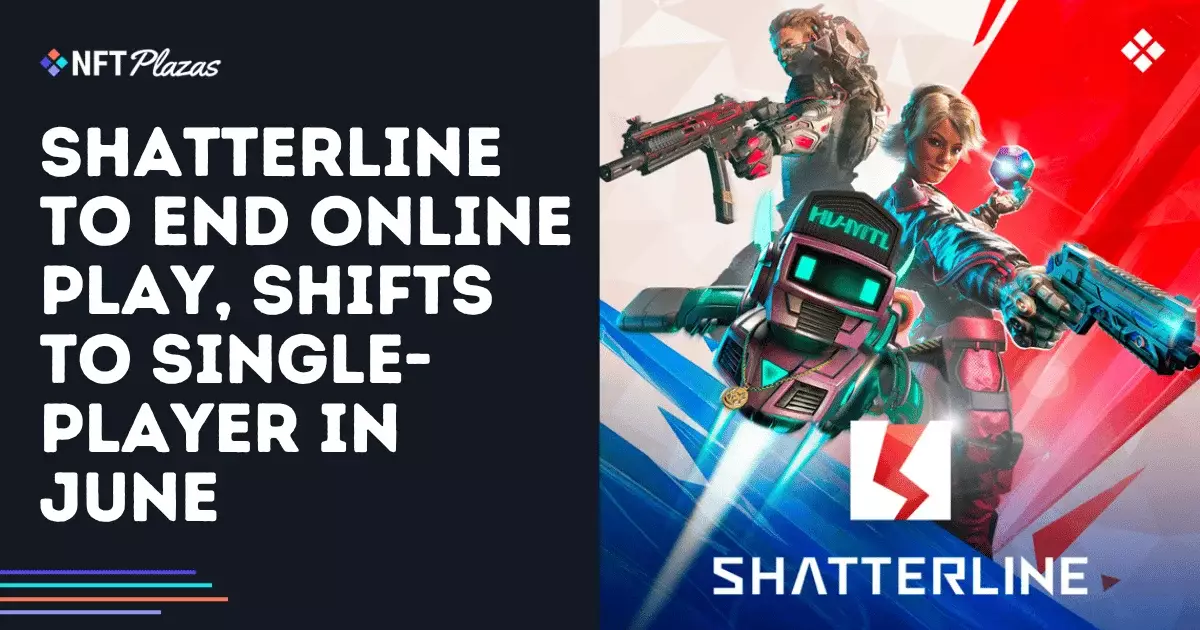The recent announcement regarding Shatterline, a sci-fi first-person shooter, marks a poignant inflection point in the realm of gaming. Once envisioned as a vibrant multiplayer experience, the game’s pivot to a single-player format raises critical questions about the sustainability of modern digital ecosystems. Frag Lab’s decision to terminate its online servers and shift to a pay-to-own model reveals the fragility of the live-service gaming model, particularly in an age where player retention is paramount. This move encapsulates the struggle many developers face in an ever-evolving industry that increasingly favors transient engagement over lasting commitment.
The Fatal Blow of Declining User Engagement
Frag Lab cited a dwindling player base as the primary impetus for this dramatic shift. Despite the initial excitement surrounding its early access launch in 2022 and subsequent appearance on the Epic Games Store, Shatterline has experienced an exodus of users, culminating in a disastrous inability to support consistent matchmaking. This situation is not an isolated case; it reflects a broader pattern in the gaming community where numerous titles trajectory from hopeful beginnings to a lack of sustainable engagement.
When a game that initially boasts a sense of excitement and community fails to maintain a critical mass of active players, it signals deeper issues within its design or appeal. Frag Lab’s transition from a free-to-play model to one requiring a purchase also highlights disconnects in monetization strategies that can alienate potential new entrants—or leave loyal fans feeling betrayed.
Blockchain Elements: A Double-Edged Sword
Moreover, the incorporation of blockchain technology within Shatterline has ricocheted through the player community, giving rise to skepticism as some feel these integrations are ill-matched with overall player experience. The notion that such futuristic technologies could enhance gameplay often clashes with the basic expectation for a seamless and engaging gaming journey. In a sense, treating gameplay like a cryptocurrency venture detracts from the essence of entertainment, veering it instead toward an investment gamble.
Players have expressed frustration as they grapple with these technological elements, particularly when poor participation rates already hindered multiplayer viability. The implication is troubling; it leads to an atmosphere where players are left questioning the developer’s priorities—profit versus a genuine commitment to a fulfilling product.
The Road Ahead: A Cautiously Optimistic View
Looking forward, Frag Lab’s promise to expand single-player content is a glimmer of hope in an otherwise dark turn of events. By pivoting away from multiplayer chaos, the studio seems poised to explore enriched narratives through new missions and enhanced gunplay mechanics. However, this caution is tempered with skepticism. The timeline for these updates remains unclear, and players cannot help but wonder whether Frag Lab will deliver on these lofty promises.
Transitioning from a multiplayer-heavy environment to a solitary focus indicates a company recalibrating its vision, yet it is essential to recognize the underlying issues that led to this drastic overhaul. Will the new single-player experience be engaging enough to retain interest? Or will it merely serve as a shadow of its former self, leaving the community stranded?
In a world where gaming experiences are increasingly ephemeral, Shatterline’s plight serves as a crucial case study, offering insights into the delicate balance between ambition, player retention, and monetization strategies. It’s a cautionary tale that every developer must contemplate, lest they find themselves similarly adrift in an unforgiving sea of consumer indifference.















Leave a Reply